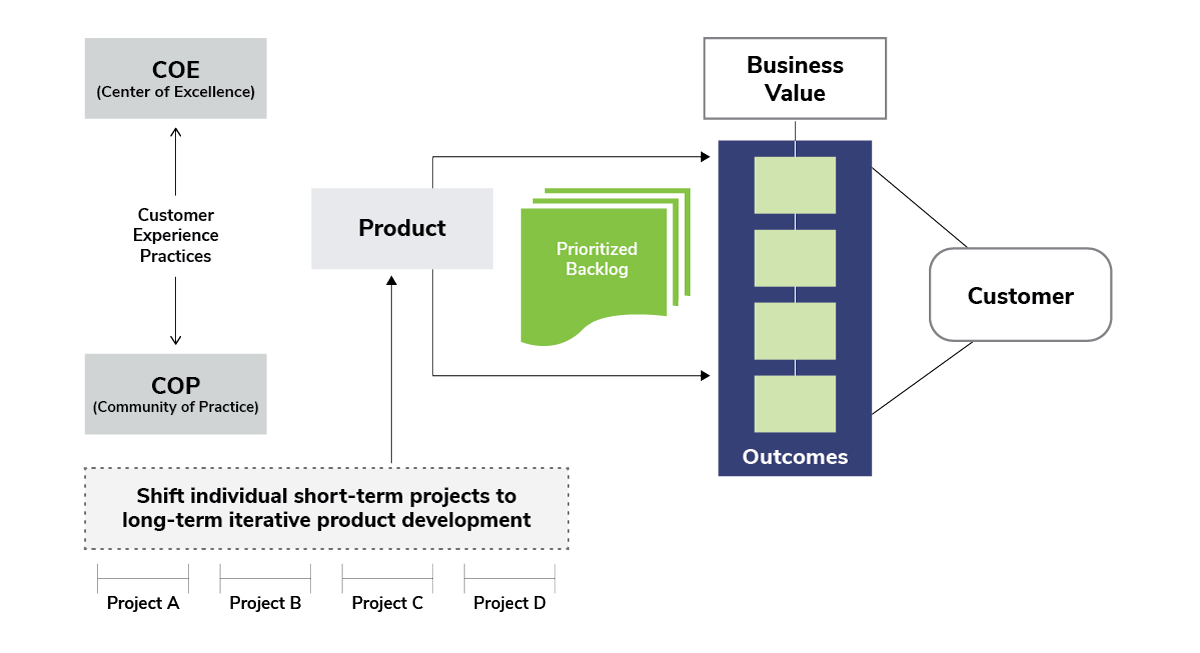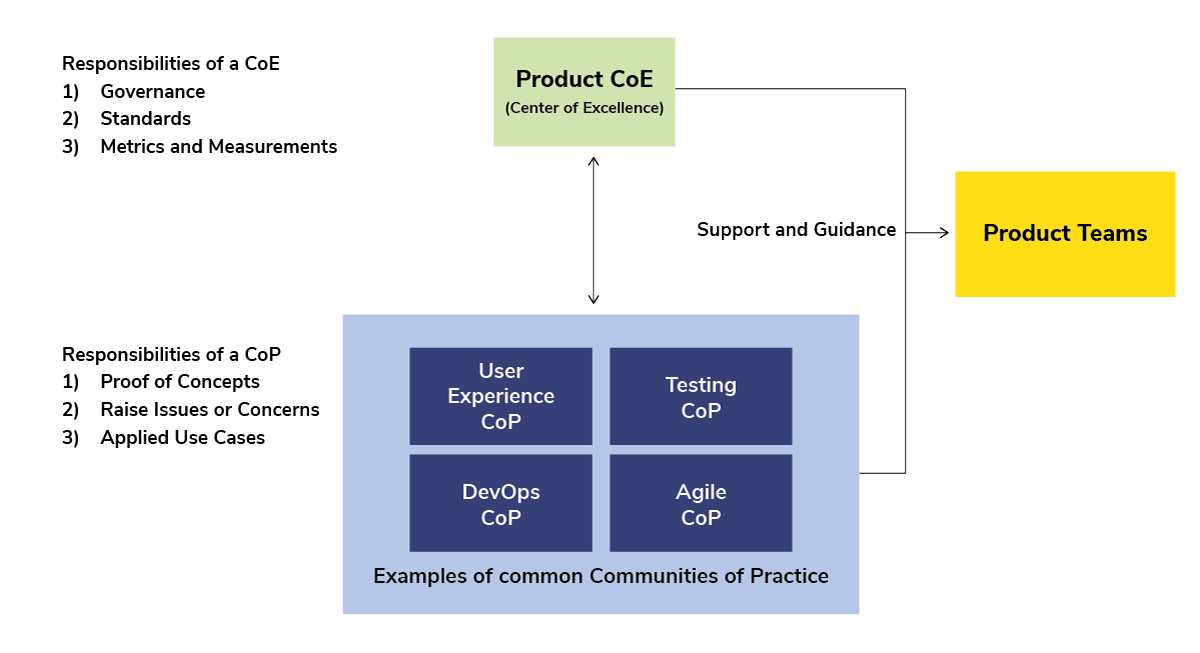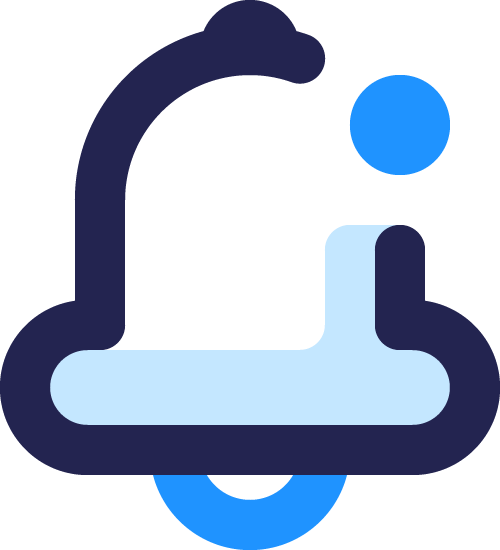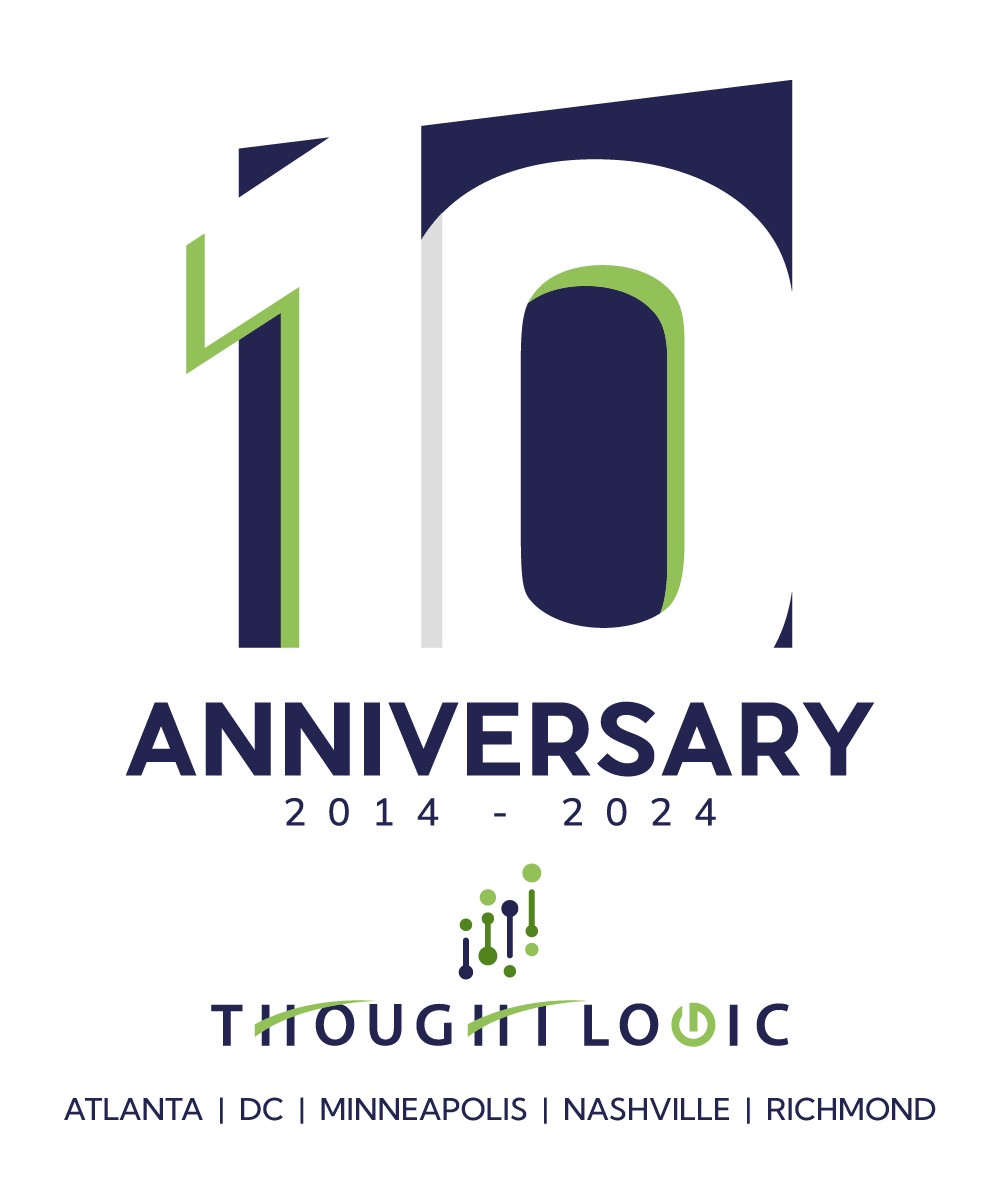You’ve moved from a project to product based operating model yet changing market conditions constantly disrupt your delivery model. What now?
Prior to the pandemic, 55% of organizations were in the process of moving away from traditional project delivery to product centric delivery . This change in emphasis from tracking tasks and deliverables with fixed end dates to ongoing and continuous product teams focused on outcomes has allowed these organizations to drive better, more innovative, product development1.
However, the impact of the pandemic and other rapidly changing business conditions has ultimately kept companies from realizing the promise of outcome-based delivery. The combination of economic uncertainty, increasing adoption of connected devices, disruption in supply chains, challenges in the labor market, and the move to a remote or hybrid workforce is forcing companies to be even more flexible and dynamic with product development and delivery.
While flexibility is important, too much flexibility in a company’s operations can introduce instability into products and drive consumers elsewhere. How does a company keep evolving product operations to balance stability with enough built-in flexibility to meet changing market demands? Our experience has shown that several key practices can drive positive results:
- Aligning teams to business outcomes provides stability at a team and product level
- Designing delivery around the customer allows flexibility in feature level prioritization to meet changing demands
- Leveraging dynamic budgeting models creates flexibility for budgets to be adjusted to meet market conditions and customer needs
- Creating a culture that prioritizes customer centric practices, notably by pairing a top-down approach with a bottoms-up approach to allow for natural growth

The diagram above represents an operating model and how these four important points come together and align product to customer needs.
Align Teams to Business Outcomes
Typically, project-based work has been focused on output, but if the output is not aligned to a measurable business outcome, success can be hard to define, and priorities can constantly shift.
Team success metrics too often focus on time to completion and meeting budget parameters. This focus fails to measure value delivered, a key metric that brings focus and stability to product operations. When an organization prioritizes work by the value it adds and identifies Objectives and Key Results (OKRs) and Key Performance Indicators (KPIs) that are aligned to the value, the focus shifts away from timelines and budgets and allows teams to have freedom to determine the best way to deliver value.
An organization must define the business value in tandem with its product strategy and then define outcomes that provide the value. Business value will not change often, but how the business value is delivered can be subject to change as teams learn more about the product, the customer, and working together.
Teams must collaborate with leadership to define product metrics that give visibility into how success is measured. Defining metrics at product initiation allows for the right data attributes to be defined and tracked to provide visibility into success. If the product is already in use and data isn’t available to track these metrics, work must be allocated to the backlog to build the right visibility because success metrics are critical to driving prioritization.
Metrics should be defined through the eyes of the customer, and it is critical for the whole team to understand how each feature impacts the desired outcome. Even with changing priorities, having the customer value as the north star provides clarity to decisions and leads to stability and focus for product teams.
How can organizations define appropriate metrics to understand value to the customer?
- Gain cross-functional agreement on the reason the team exists while considering the business outcome the product is driving
- Define metrics based on the desired business outcome
- Engage the team in defining value creation through the eyes of the customer
- Make decisions based on the impact to the agreed-upon metrics
Design Delivery Around the Customer
Even in a fully agile project, work is driven by sprint timelines and project plans. Items in the backlog are typically prioritized by level of effort and time remaining rather than associated value delivered. The focus on product management versus project management uses customer interactions and insights to adjust priorities and assigns a quantified value to each feature and backlog item.
When delivering work with the product mindset, customer feedback is incorporated throughout the product lifecycle and work can be prioritized by the value it brings.
The value of backlog items needs to be constantly reevaluated with a customer-first mindset. Incorporating customer insights into the prioritization of backlog items brings focus to addressing customer pain points and opportunities. Reprioritizing the backlog to meet the needs of the customer shows the organization’s flexibility to bring the solution to the end user in a timely manner.
Once a backlog item is released into production, the team needs to understand how the user is interacting with the backlog item and determining whether the estimated value was obtained. This analysis can influence the work for future items and help to determine focus areas in a product. If a particular area of a product is getting high usage and customer benefit, more focus should be given to this area of the product and backlog items prioritized accordingly.
Leverage Dynamic Budgeting Models
Organizations typically forecast their budgets one year out, and budgeting for projects is based on a set timeframe with an end date. While this may work well for projects with a true end date, product demand is dynamic, and products require perpetual funding over the lifecycle of the product that fluctuates with customer demand and technological innovation.
By focusing on the product and not the project(s), organizations can remove uncertainty about funding and focus on the value provided.
Having a committed budget range allocated to business value instead of a timeframe allows product managers and owners to make decisions within the allocated budget, but also allows enough flexibility to fluctuate with market trends that are not based on a set timeframe.
For example, if metrics indicate that a product could gain more customers by including a new feature set, and a vendor the feature set requires a vendor to implement, the product manager should have the authority to reallocate budget from other activities to the vendor. If this new feature set requires budget that is outside the committed range, then a streamlined approval process should be in place that allows leadership too quickly make budget decisions across products and change funding throughout the year, if needed. With a yearly fixed budget model, implementing the new feature set would have to wait until the yearly budget review and the product would lose potential customers.
How can organizations incorporate dynamic budgeting models into their product development space?
- Create a budget range for a product based on business goals and outcomes and the corresponding products that deliver that value
- To determine the change in budget for a specific product, use metrics that define the value of the product and compare these metrics across products
- The authority to decide how to use the committed product budget should lie directly with the product team
- To account for changing market conditions, review and adjust budgets at least quarterly and allow for quick decision making outside of a quarterly review
Aligning budgets to business value and having set metrics to determine if the estimated value is being met, removes questions about what budget allocation each product will receive.
Create a Culture that Prioritizes Customer Experience Practices
With traditional technology projects, IT often assigns resources and makes decisions. A top-down approach driven by deadlines and a lack of decision-making authority distributed across stakeholders often drives competing priorities and can result in a lack of focus on customer experience.
Through shifting the organization’s focus to the product, customer experience becomes central to product development, and understanding the customer’s journey is crucial for the success. Building a culture of customer empathy requires decision making at the level closest to the customer which ultimately shortens time to market and allows for flexibility to meet market trends.
Incorporating customer experience practices, like customer journey maps, user research, and user interviews into product development can be a substantial change in some organizations. Establishing Centers of Excellence can drive leading customer experience practices and the right standards for a product-led organization, but this should be balanced through a bottoms-up, grassroots approach which gives a voice to the team doing the work to provide their feedback on standards.
Communities of Practice (CoPs) are one way to give product teams this voice. CoPs allow standards and practices to grow organically “on the ground” and be harvested as they progress. Communities of Practice should provide feedback into the Center of Excellence to ensure a two-way feedback model and to allow practices that have been proven to be standardized across all teams.

The diagram above shows one way to drive leading practices to product teams by aligning Communities of Practice with Centers of Excellence.
Another way to drive adoption of best practices and organic growth is to leverage Agile and Customer Experience coaches within product teams. Coaches can be paired with an immersive learning environment to kick-start a product team and can continue to help the team throughout early adoption challenges.
What Next?
While many companies are well on their way to moving from a project-based operating model to a product-based model, product delivery teams are still facing challenges with delivering business value in dynamic environments. The steps above outline the components necessary for a customer-focused product delivery team to remain flexible enough to meet changing market conditions while also remaining stable enough to produce a high-quality product. Thought Logic’s approach to product operations prioritizes longevity so that, as your product operations mature, your teams can remain stable yet flexible enough to be responsive to customer needs. Many companies are trying to understand where they are on the maturity curve and how to progress along the curve. An Operations Maturity Roadmap can help you determine the best place to start if you are not yet on your product journey or have questions and concerns about your progress.

About Digital Enablement
Thought Logic’s Digital Enablement smartSolution provides full-circle capabilities that help keep organizations keep ahead of digital change.

Sign up to receive future Insights in your email box.
Never miss an update.









